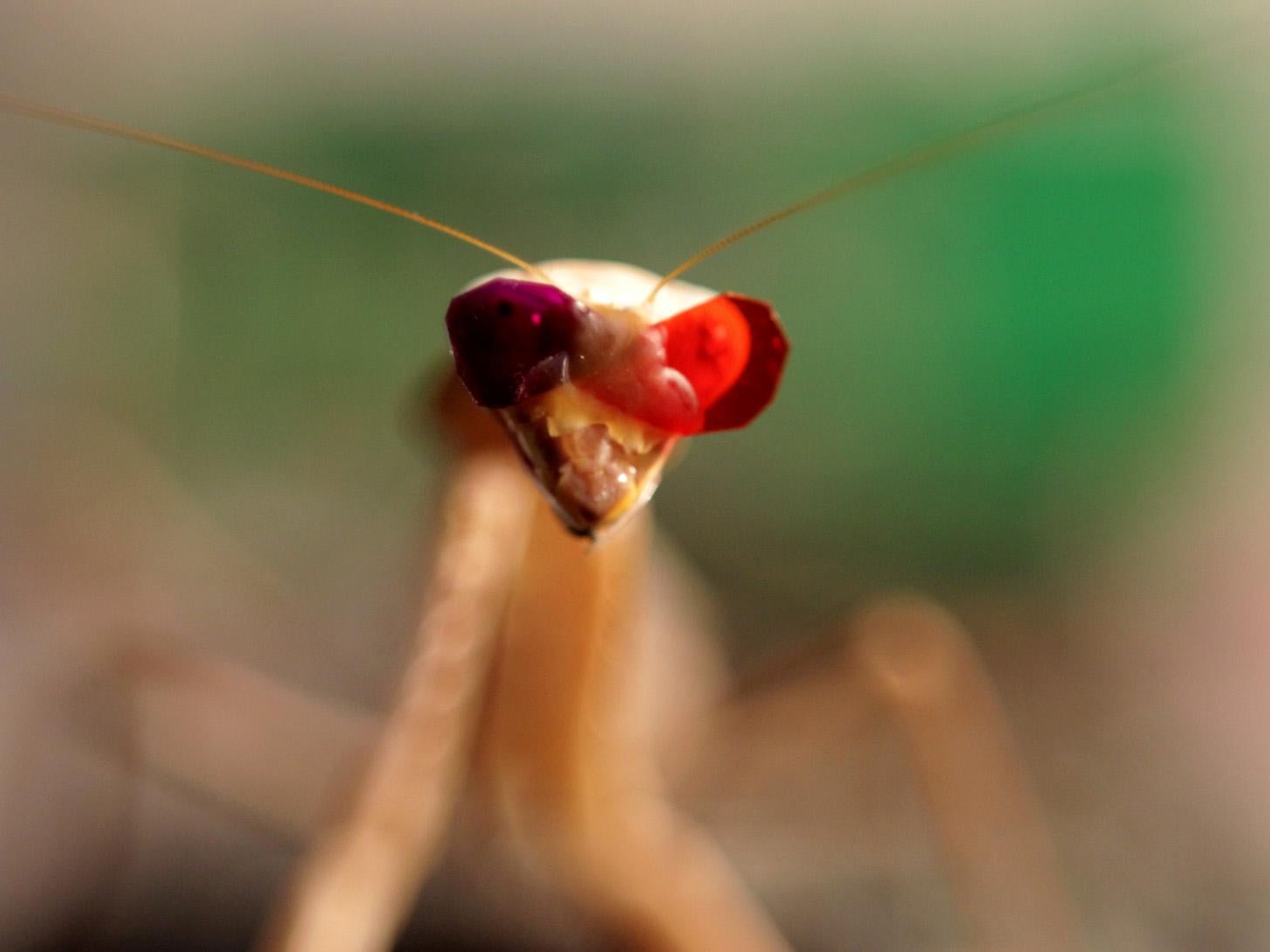Scientists make tiny 3D glasses for insects to understand how they see the world
Researchers fitted miniature eyewear to praying mantises with beeswax and discovered they had a unique type of vision

Your support helps us to tell the story
From reproductive rights to climate change to Big Tech, The Independent is on the ground when the story is developing. Whether it's investigating the financials of Elon Musk's pro-Trump PAC or producing our latest documentary, 'The A Word', which shines a light on the American women fighting for reproductive rights, we know how important it is to parse out the facts from the messaging.
At such a critical moment in US history, we need reporters on the ground. Your donation allows us to keep sending journalists to speak to both sides of the story.
The Independent is trusted by Americans across the entire political spectrum. And unlike many other quality news outlets, we choose not to lock Americans out of our reporting and analysis with paywalls. We believe quality journalism should be available to everyone, paid for by those who can afford it.
Your support makes all the difference.Scientists fitted praying mantises with tiny 3D glasses to understanding how they see the world, and discovered the insects have a “completely new form” of vision unlike that of any other known creature.
Researchers used beeswax to glue the miniature eyewear to the faces of mantises and study how their vision compares to human sight.
The team at Newcastle University‘s Institute of Neuroscience said their findings on the insects’ unique form of ”stereo” sight, in which two views are merged to create a single image, could lead to important advances in robotics.
Scientists placed the creatures in front of an “insect cinema” which showed them 3D projections of prey as well as the types of complex dot-patterns used to study human vision.
They found that while humans 3D stereo vision works by matching up the details of the picture viewed by each eye, mantises’ 3D sight only worked for moving images.
“Mantises only attack moving prey, so their 3D doesn’t need to work in still images,” said behavioural ecologist Vivek Nityananda, one of the authors of the study. “We found mantises don’t bother about the details of the picture, but just look for places where the picture is changing.”
The team found that the mantis can track movement even when each eye is presented with completely different images. In a human, this would result in an incomprehensible picture.
“This is a completely new form of 3D vision as it is based on change over time instead of static images,” said Dr Vivek Nityananda. “In mantises it is probably designed to answer the question ‘is there prey at the right distance for me to catch?’”
The scientists believe their findings, published in the journal Current Biology, could inform simpler visual processing for robots.
As part of related research, a Newcastle University engineering student developed an electronic mantis arm which mimics the distinct striking action of the insect.
Dr Ghaith Tarawneh, of the university’s School of Engineering, said: “Many robots use stereo vision to help them navigate, but this is usually based on complex human stereo. Since insect brains are so tiny, their form of stereo vision can’t require much computer processing. This means it could find useful applications in low-power autonomous robots.”
Monkeys, cats, horses, owls and toads are among the animals that have stereo vision, but praying mantises are thought to the only insects which see in this way.
Join our commenting forum
Join thought-provoking conversations, follow other Independent readers and see their replies
Comments